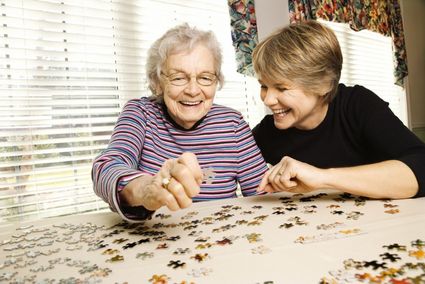Seniors with Low Vision Can Decrease Reliance on Others
Last updated 9/16/2015 at 8:40pm | View PDF
A significant obstacle for maintaining self-reliance for older people is low vision. A common condition for this age group, low vision can make everyday activities seem impossible, require the assistance of loved ones and caregivers and increase the risk of falls and mental health issues. The American Academy of Ophthalmology has provided tips to help older persons with low vision – and their loved ones – enhance the use of their remaining sight and maintain self-sufficiency at home.
By definition, low vision occurs when a person only has partial sight that cannot be corrected by glasses, contact lenses, medicine or surgery. It is characterized by blurred vision, blind spots or tunnel vision and often caused by age-related eye diseases such as glaucoma and age-related macular degeneration. Currently, more than 2.5 million Americans age 65 and older have low vision, but this number is projected to increase to 7 million by 2050 due to the growing aging population. While people with low vision disorders may depend on the support of loved ones and caregivers to help provide assistance at home, ophthalmologists say there are ways to lessen this dependency for those with less severe forms of low vision.
"Having low vision can be challenging, but it doesn't have to mean giving up your independence," said Charles P. Wilkinson, M.D., chair of EyeCare America, a public service program of the Foundation of the American Academy of Ophthalmology that provides eye care to medically underserved seniors. "Just a few adjustments around the house can make a big difference in maintaining comfort and strengthening your ability to accomplish your normal daily activities with partial sight."
Here are some tips from the academy:
• Set the scene - Place furniture in small groupings so less distance vision is required during a conversation. Avoid upholstery and rugs with patterns, which can create visual confusion. Instead, find furniture with texture, which provides tactile clues for identification.
• Increase contrast and color - Set brightly colored accessories around the home to help with locating the items around them. Use contrasting colors to clearly define doorknobs, steps, doorframes, switch plates, outlets or stairway landings to help decrease risk of missteps and falls.
• Make it bright - Brighter lighting can help with reading and activities such as sewing or cooking. Provide plenty of floor lamps and table lamps to enhance overhead lighting. Remove mirrors that reflect lights to create a glare. Use window coverings that can allow natural light through.
• Embrace technology - There are a variety of technology-based tools for smartphones and tablets designed to aid people with low vision. One example is Spotlight Text, which can be configured to help people with particular patterns of low vision read with greater comfort.
• Get rid of hazards - Use non-glare products to clean floors instead of wax. Tape down area rugs and remove electrical cords from pathways to decrease risk of falling and injury.
• Keep up with eye exams - Several diseases that cause low vision, such as macular degeneration and glaucoma, are progressive and can get worse without proper monitoring and treatment. During a comprehensive eye exam, an ophthalmologist can identify both the type and severity of vision loss, and in some cases refer patients to low vision rehabilitation.
Qualifying seniors may be eligible for a comprehensive eye exam and up to one year of treatment often at no out-of-pocket cost through EyeCare America. For over 30 years, the program has helped more than 1.8 million older Americans maintain their independence by providing information resources and eye care through its corps of over 6,000 ophthalmologist volunteers.
For more information, visit http://www.eyecareamerica.org.








Reader Comments(0)